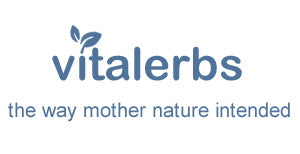A perennial, 1-2 feet tall, with several steins, arising from one root, and slightly hairy. The leaves are ternate. Leaflets are ovate, entire, nearly smooth, ending in a long point, often a lighter color in the center. The fragrant flowers are red to purple, in dense, terminal ovoid or globular heads. It is a native of Europe and common in cultivation across the U.S. Found wild in mountain meadows, disturbed areas and along stream banks, in light sandy soil. The Indians of California, Arizona & elsewhere have eaten it and other species, raw or as a salad. A tea from the flower can be drunk daily. Steep 1 teaspoon of the flowers to 1 cup water. A decoction can be made of the roots.
UPC: 084783017004.
Origin(s): Albania, Bulgaria, Chile, Croatia, Poland, United States.
Latin Name(s): Trifolium pratense.
Also known as: Cow clover, wild clover, purple clover.
Plant Part(s) Used: Blossoms.
Appearance: Cut & Whole: Purple,green & brown. Powder: Greenish Brown.
Aroma: Fragrant.
Taste: Sweet.
GMO Status: Non-GMO.
Allergen: None.
Additives: Free of any additives or preservatives.
Applications / Preparations: Can be put into capsules, teas, salads, soups, herbal vinegars, baked goods, eaten raw or infused as an herbal extract. For cosmetic use can be put in facial steams, facial wash, salves, ointmens, lotion or water infusion as a final rinse for hair. For decorative use can be added to potpourri or heral displays.
Storage: Store in a sealed container in a cool, dry place.
Shelf Life: It is very difficult to pin down an exact expiration date for most single herbs as they do not really expire, they lose potency or strength over time but will still have value. Unlike synthetic material or drugs, herbs can contain many constituents that contribute to their medicinal effects. Even if when we know what the active constituents are, there are often many of them in a single herb, each with different rates of degradation. Some herbs lose their effect more easily. Other herbs that possess more stable compounds such as alkaloids or steroids will last much longer.
A huge part of the degradation rate of herbs depends also on the storage conditions of the herb, & even on the quality of the herb before storage – how it was grown, harvested, dried & processed. If the product is left in hot places or open to sunlight then it will degrade much quicker than if it was stored in cool, dry place & sealed tightly.
A good rule of thumb is that herbs should be stored no longer than 2-3 years but many herbs will have great strength much longer than that. To determine if a an herb is still good you can check the appearance & aroma. Herbs that are no longer acceptable will have lost much of its vibrant color & will instead appear dull & faded. The bigger key though is to smell the raw materials to see if the potent aroma is still present.
Warning: None known.






